ASRock Core 100HT-BD : Bringing HTPCs to the Mainstream Market [UPDATED : Noise Issue]
by Ganesh T S on July 19, 2010 9:34 PM EST- Posted in
- Home Theater
- Arrandale
- ASRock
- Media Streamer
- Core i3
- HTPC
Most users of the Core 100 HT-BD will probably not need to play around with the BIOS. That said, the unit carries the AMI L1.32 BIOS, and does provide a good set of features for the enthusiasts to play around with.
First off, we have the OC Tweaker option, which has more features compared to the overclocking Windows utility that ASRock supplies. There is a Turbo30 option to increase the system performance in a transparent manner. In our testing, we found that overclocking doesn't deliver any improvement for HTPC workloads, so we didn't test this aspect too much. One point of note is that the GPU easily overclocks to 900 MHz from the stock 667 MHz. This improved the Windows Experience Index score sometimes (depending on the Intel graphics driver version).
In the 'Advanced' section of the BIOS, most users would be interested in the Instant Flash utility which enables BIOS updates from a flash driver without booting into Windows. Of more usefulness is the 'Good Night LED' feature which turns off the really bright blue LED in the front when the unit is in 'Standby' mode.
The 'H/W Monitor' section allows one to modify the CPU and chassis fan settings. The default 'Auto' option worked very well, and managed to keep the unit idling around 45C. The BIOS page seemed to always indicate a higher temperature compared to the Windows utility. On booting into the OS and entering into 'Idle' mode, the power saving options kick in, bringing down the temperatures.
The Boot section allows you to choose the boot device and boot order. Booting from USB devices is indeed possible, but the menu entry in the BIOS appears only if the USB device is connected to the unit.


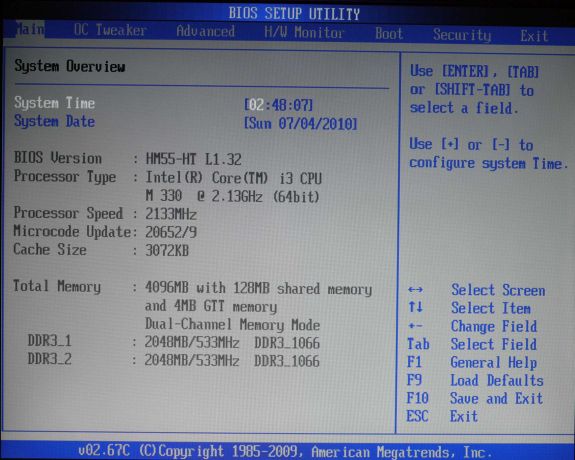
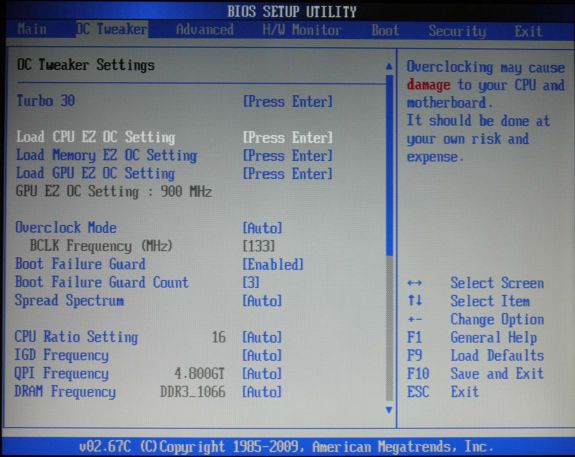
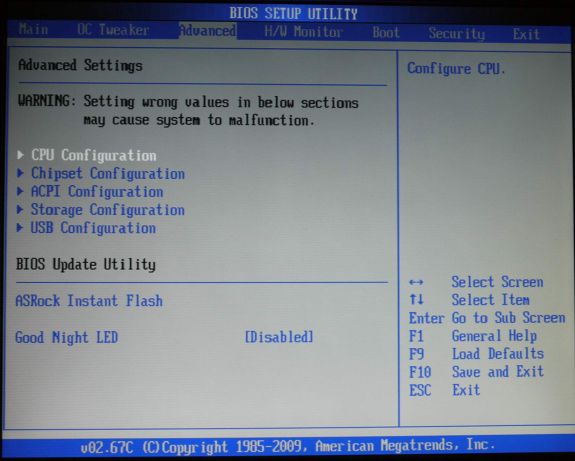
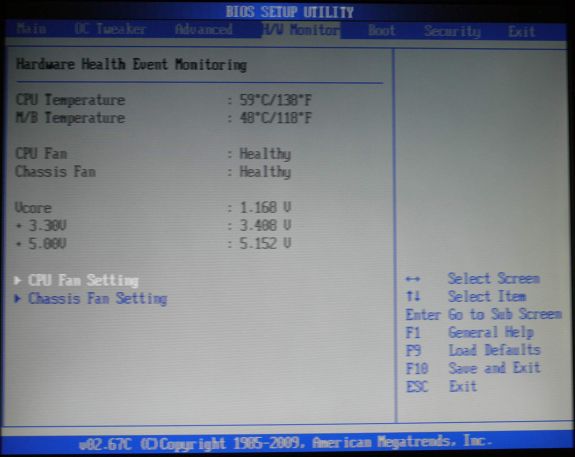
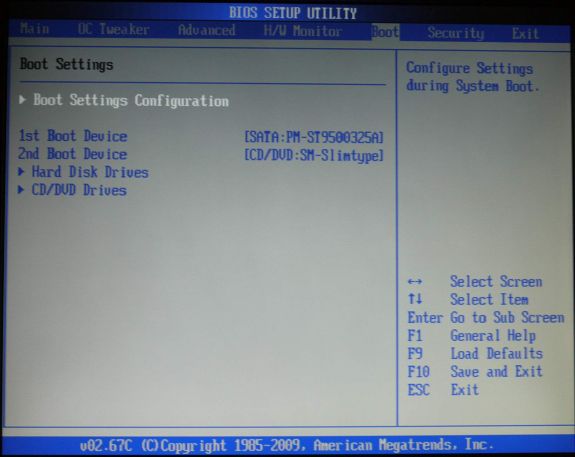








107 Comments
View All Comments
spddemon - Thursday, July 22, 2010 - link
That is great news ganeshts.34.5db at 2ft is very quiet to me... with my theater setup you can not even hear my xbox so this would be no problem.
i still want to see the core i3 330 vs 530 tests. I wonder how much faster the 530 is since it is a faster CPU and GPU, but I also wonder how much more power it will consume in typical home theater use.
omems - Thursday, July 22, 2010 - link
This is a really great article, Ganesh. My HTPC is getting a bit old at about 6 years, so I'm definitely ready to upgrade and take advantage of some of the newer technologies which are finally being combined usefully. I have a few questions about how this assembly sleeps:1. When you put it to sleep, which components remain on? Just RAM? Any fans?
2. I believe the Atheros AR9287 supports what they call wake-on-wireless. Does that work in this implementation, from sleep? How about from hibernation?
3. Did you try coming out of Hibernation and seeing if the handshakes were maintained?
4. I am confused by what's going on when you say in the Ease of Use section:
"...ASRock supplies an Instant Boot utility. Using this, whenver [sic] the Core 100 HT-BD is shut down, it boots up once again and shuts down before the power can be safely removed."
Does the instant boot utility bring the machine into the main OS (say Windows) or is it a stripped-down linux environment for simple access to things like music and DVD playback?
If it's the former, what's the point--what does it do that just waking up doesn't? Or is it some kind of middleware to keep maybe the IR and WiFi active?
If it's the latter, what sorts of playback support is there?
I'm mostly concerned with limiting hard drive and power usage, but also being able to quickly resume from a wireless connection. With my current setup (almost 7 years old at its core), I like to send it to Hibernate, and then wake it up via WOL with my iPod or another computer to send new files to over. I avoid sleep because the something (CPU fan and hard drives, if I recall correctly) is still active and it's kind of loud and I worry the drives will wear out faster. I probably could sort it out but why bother when such cool new toys are coming out?
Thanks!
ganeshts - Thursday, July 22, 2010 - link
omems,I will try to handle your queries in a series of replies. In this one, I will let you know things which I know off the top of my head without accessing the unit:
1. Sleep : The fans are completely off. I heard nary a sound from the unit when in sleep mode. I think cross ventilation slots on either side of the RAM modules help. The blue front LED keeps blinking slowly on and off in sleep mode, but you can turn that OFF in the BIOS by Enabling the 'Goodnight LED' option (see BIOS pictures set).
2. Wake on wireless using AR9287 hasn't been tested. I will get back to you on this ASAP.
3. Handshakes are maintained much better than in my ATI based HTPC. My power on sequence when unit is in sleep or hibernate or complete shutdown mode (as long as AC adapater is connected to unit) is as follows: Power on TV and put it it in AV receiver input mode -> Power on Receiver -> Press Power button on MCE remote. Display comes out perfectly on TV every time I followed this sequence.
4. InstantBoot : Look at the coverage on ZDNet here: http://www.zdnet.com/blog/hardware/asrock-4-second... ; I think their explanation and analysis would be much better than what I can do in this space :)
Will provide more info within a day or so.
ganeshts - Thursday, July 22, 2010 - link
omems,ASRock reports that only the AR9280 and AR9281 support Wake-On-Wireless. Unfortunately, the add on card in Core 100 is the AR9287.
I am not sure how you wanted to use the 'wake on wireless' feature, but I would say that using the MCE remote to wake up the unit is the easiest and most simple.
omems - Monday, July 26, 2010 - link
Thanks, Ganesh, for all the additional info.I plan to use the wake on wireless when the HTPC is asleep and I'm at another computer in the house and want to move newly-acquired media to the HTPC without having to go to that room and wake it up.
I suppose it's not a deal breaker though if the included card doesn't support it. I could use encouragement to get off my butt now and again.
The insantBoot sounds like an interesting hybrid concept. Thanks for the link.
Cheers
ganeshts - Monday, July 26, 2010 - link
omems, I did see an option in the BIOS to enable / disable 'Wake-On-LAN'. So, if this unit is going to be connected to a wired network, you might still find it hard to get off your couch / chair / bed :Dvlado08 - Thursday, July 22, 2010 - link
Ganesh on page 5 you say:"We did observe red spikes, but disabling the C-states, as well as SpeedStep in the BIOS Advanced CPU configuration helped in alleviating the issue."
On page 11 you say:
"At idle, the system consumed around 18 W."
1) Is this DC power or is this AC power measured at wall outlet?
2) Is 18W idle power with enabled C-states and SpeedStep?
3) And if yes then what is the idle power when disabling the C-states, as well as SpeedStep?
ganeshts - Thursday, July 22, 2010 - link
vlad08,The quoted power numbers are measured AC power using Kill-a-Watt over a 6 hour usage period.
18W idle power is with C-state and SpeedStep enabled. I will quote idle power numbers with them disabled after testing out tonight.
ganeshts - Friday, July 23, 2010 - link
vlado08,The idle power consumption with both C-states and SpeedStep disabled is 21.6W.
The CPU wasn't overclocked (it idled at 2.14 GHz).
Regards
Ganesh
vlado08 - Friday, July 23, 2010 - link
Thanks Ganesh.So it is still less than the ion 330 idle power - 28,6W according to:
http://www.anandtech.com/show/2828/8
If only Intel team resolve the 23,976hz issue .....
I am still waiting because for me this is more important than bitsreaming